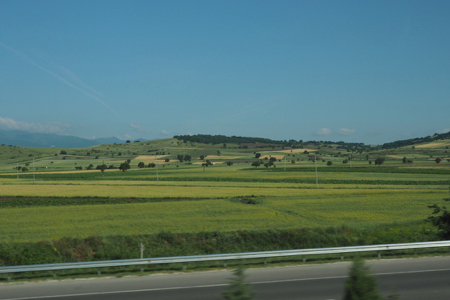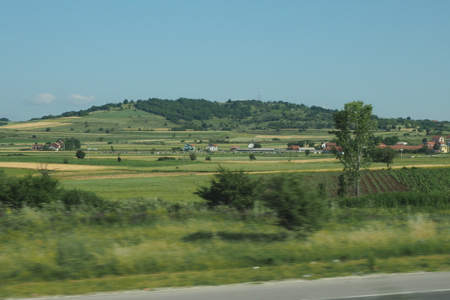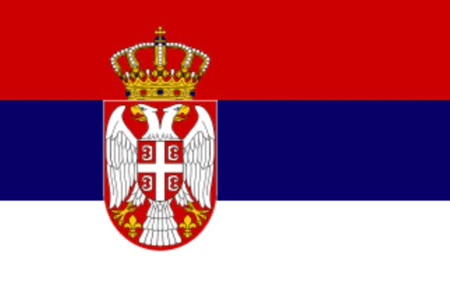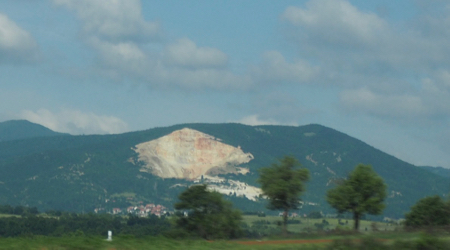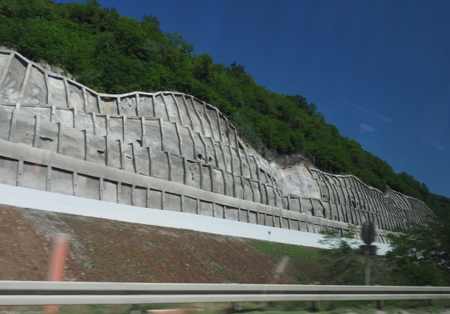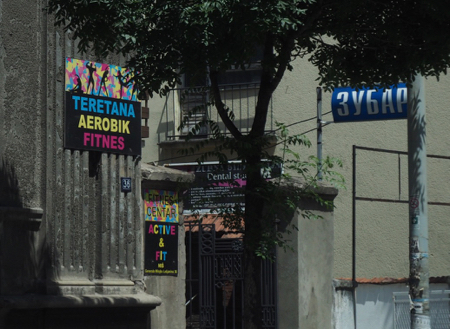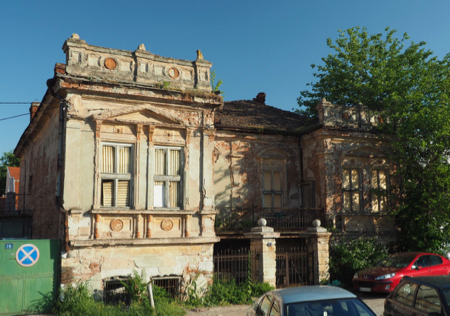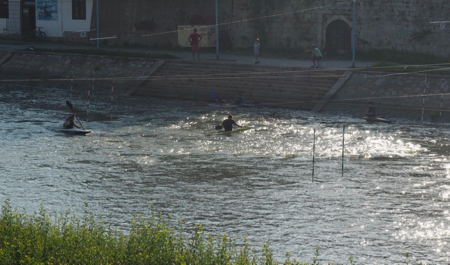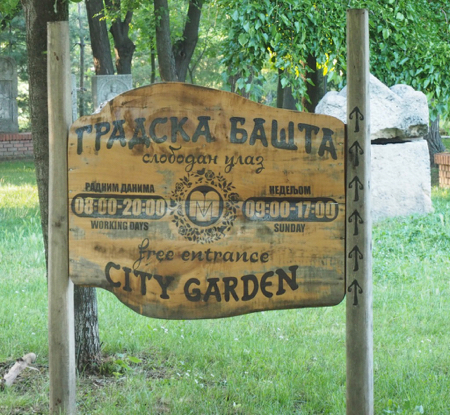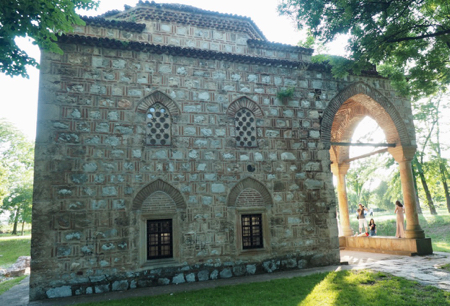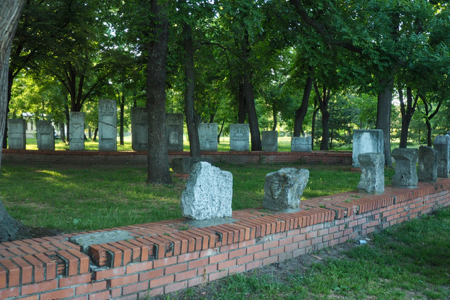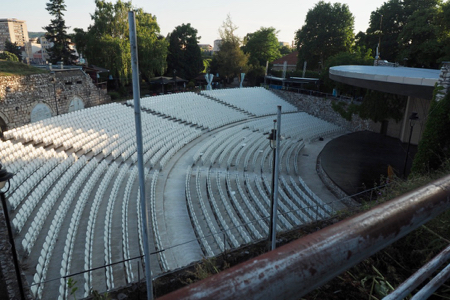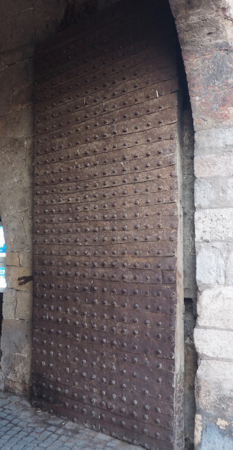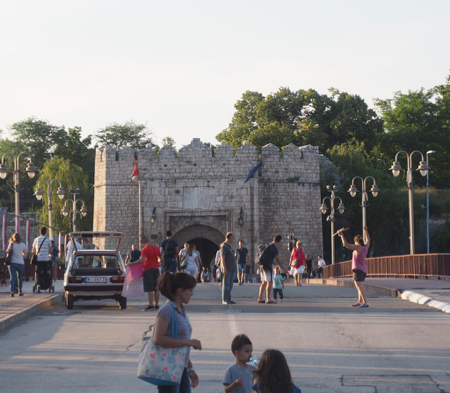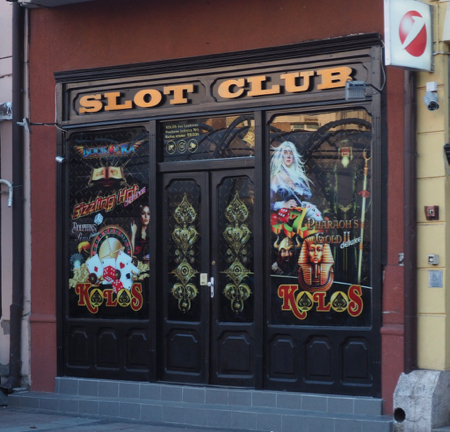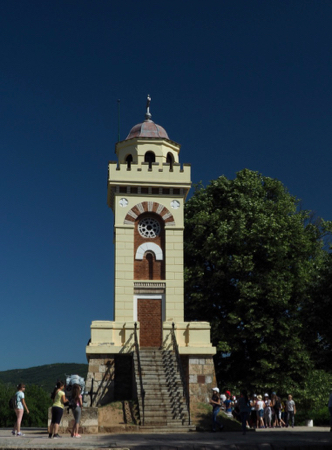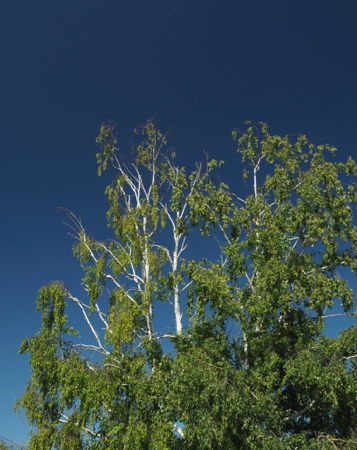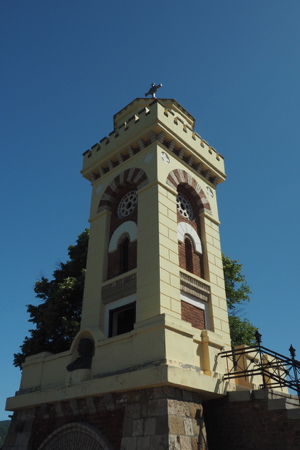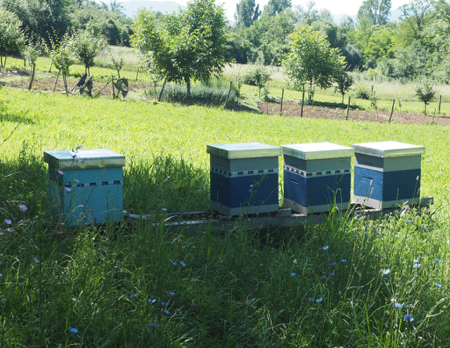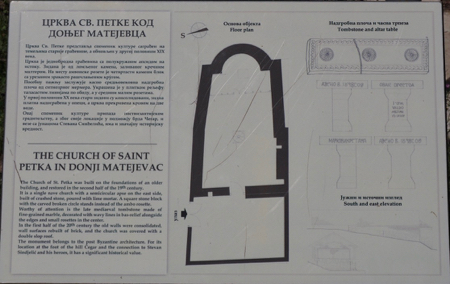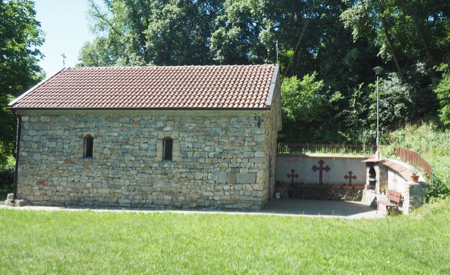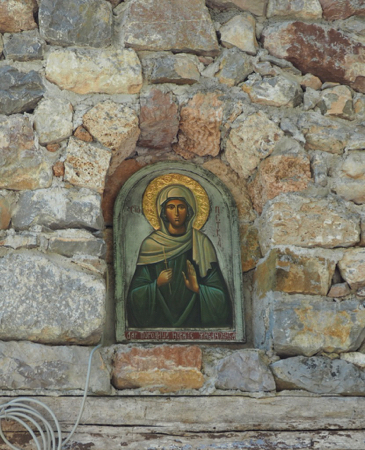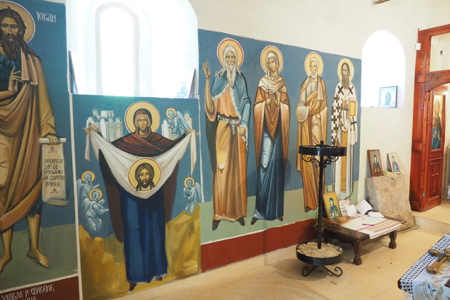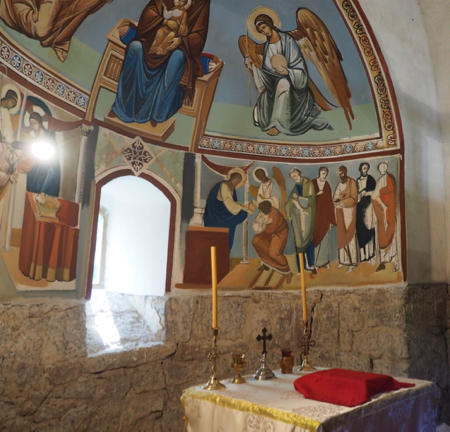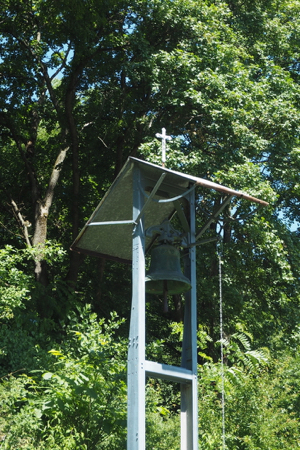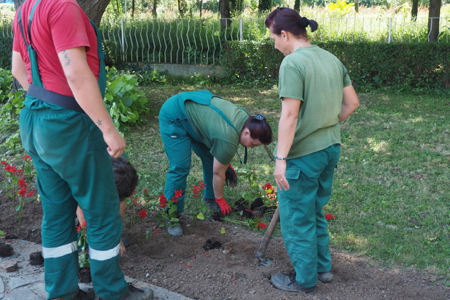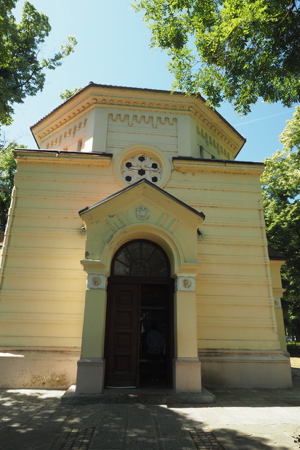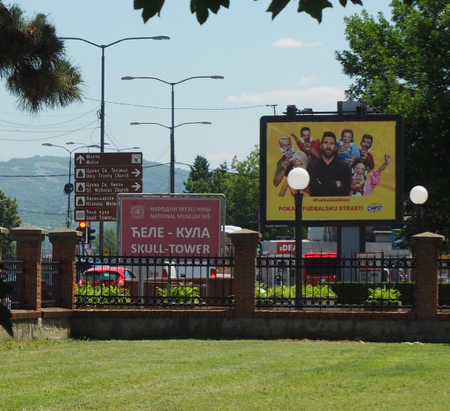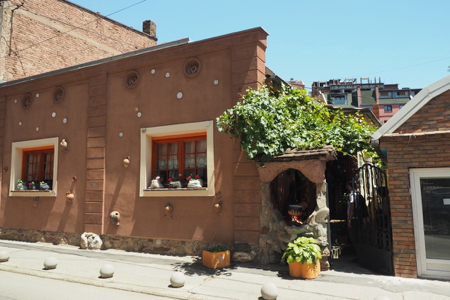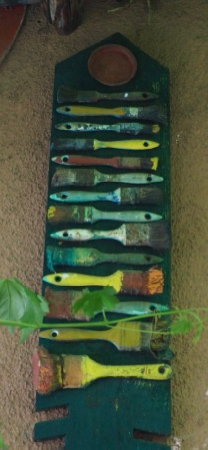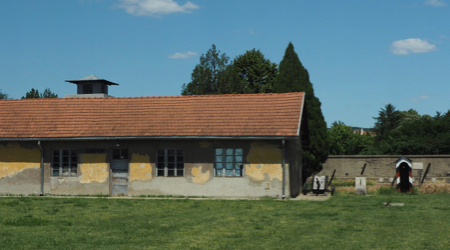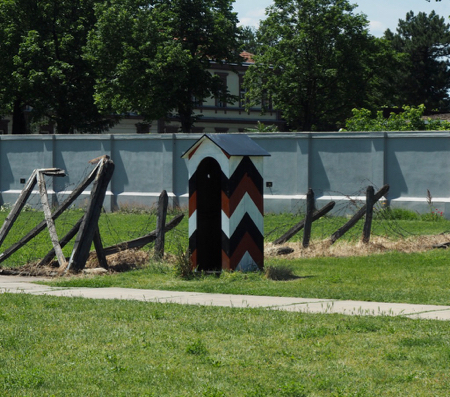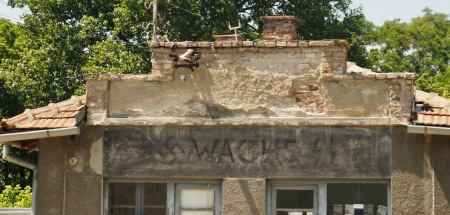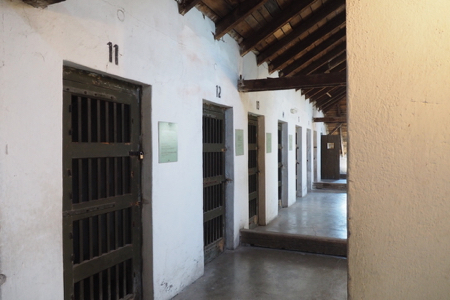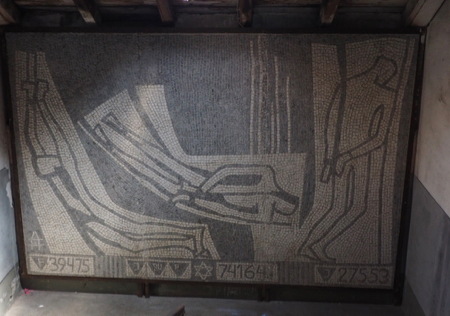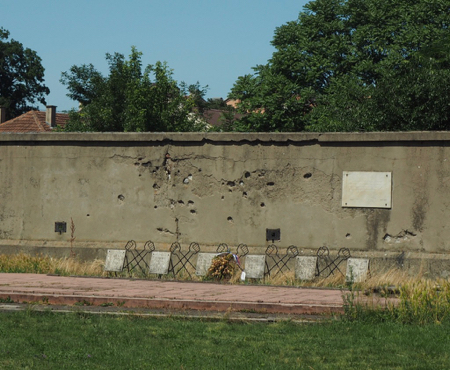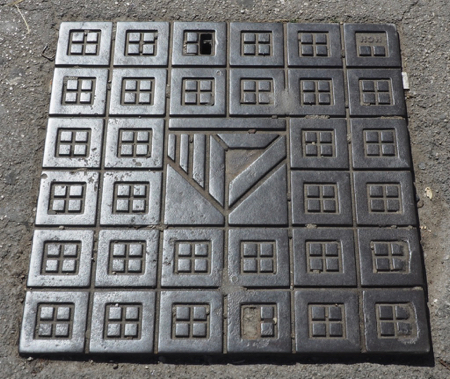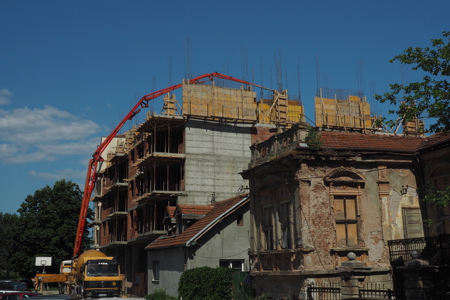Mon., 5/28/18 - Travel to Nis, Serbia
This was a strange day. Alexandra and Christo took seven of us to the border between Macedonia and Serbia. At the first gas station in Serbia we transferred to a minibus and met our new guide, Milan, and driver, Stephan. The van is small with three seats across so some of us have nowhere to put day packs as we drive.
Albanian power plant
Albanian hillside
Farmland, from the bus
Farmland, from the bus
The border crossing was easy for us because Alexandra put 5 euros in her passport so security just collected our passports on the bus in Macedonia and just checked our faces, stamped our pages, and photostated our pictures going into Serbia. Trucks however were a different story. Truck drivers pay about 80 euros as a bribe to be directed into the “short line” and the rest are lined up for about a mile.
Serbia is a Schengen country so EU citizens can easily cross the borders. But as far as joining the EU, Serbians have about given up trying to meet all of the demands to qualify.
Flag of Serbia
License Plate - EU admission may be far in the future
Open pit mine on the hillside
Erosion and landslide prevention to protect the highway
Nice sign
We stopped at the home of a retired couple who are the parents of a friend of another tour guide. The idea was to have us experience the local customs when people visit. First we were given a small amount of homemade Rakia. It was very potent. Then we spooned out a stewed fig and had a glass of water. Then the woman served a kind of cake and then mint syrup to mix with water and then syrup of elderberry. Rakia and “spoon sweets” are very popular in all of the Balkan countries. They were obviously poor, living on pensions, but happy to have us visit.
We arrived in Nis (pronounced Née sh) and went to an included lunch 30 minutes after eating at our home visit. Each of us was served a cold plate of three cheeses and three cold meats and a large bowl of shredded salad. We just stared at it. Milan then explained that in Serbia one meal was served and the food was meant to get taken home like a doggie bag for your next meal. They brought out huge bread rolls so we made sandwiches and put them in to-go boxes. Then they brought us a plate of cold fried vegetables and fries and a platter of veal sausages. And then we had Serbia’s version of baklava. It was a huge amount of food.
We checked into our hotel, My Place, and then met for a briefing at 5:30 and an orientation walk.
We walked along the Nisava River on a park/promenade. There were some statues and a monument to 1700 years of Christianity with the faces of three Roman emperors who were from here in Nis. One was Constantine the Great of Constantinople. There was a monument to hero’s of WWII and the two million Slavs killed in the war. On the river is the Kayak Club and several kayakers were negotiating the suspended gates on the river.
We walked across a pedestrian bridge and entered the fortress built in 1822 on top of the original Roman fort. The fort protects the gorge that is the only route through the mountains from Istanbul. Inside the fort is a lovely park with lots of people enjoying being outside. There is an old hamam, mosque, and lapidarium inside.
Older building
Kayak course on the Nisava River in Nis
Monuments in the park
Amphitheater for concerts, etc.
Door of the fortress
Sign for the river
Entrance to the fortress
Gambling in Nis
We walked back across the river and into the city square where we found money exchanges, an ATM, a supermarket, and gelato. We bought gelato after exchanging Euros for Dinars and walked home to eat our sandwich from lunch. Ice cream on these trips is our comfort food.
Today we visited the Cegar Hill Monument, where the Battle of Cegar Hill took place at the beginning of the 19th century. We shared our visit with about 50 third graders who offered us cherries they had picked and a girl gave us a greeting in English. They were cute and well behaved.
Roadside stand
Cegar Hill Monument
Sycamore at Cegar Hill
Tower at the Monument
.
Bee boxes
After Cegar Hill, we went to St. Petka Church that has a mass grave for the Serbs killed on the Hill. The church was moved and rebuilt after a landslide, but there are stones from the 9th, 10th, and 11th c. with inscriptions. A Roman church was built there in 400 CE.
Church of St. Petka
Interior
Bell outside the church
From St. Petka's we went to look at the Skull Tower, a memorial to the fallen rebels of Cegar Hill.
Keeping the grounds beautiful
Skull Tower
Embedded skulls
Signs
As a break from this gruesome history, we sat in a unique Tea Room and sampled a variety of things the owner and his wife make and sell. He is what we could call a medicine man. He studies herbal remedies and we sampled his rakia, raspberry drink, red wine, a mushroom-based fermented drink, wild cranberries, and seed things, and bread from hand ground whole grains. It was an eclectic spread. His “cafe” was decorated with many interesting recycled things like flowers planted in the seat of his old denim jeans and cross country skies as coat hooks. The bathroom had an eastern squat toilet, a western one with no seat, and a western with a seat all facing one another in a circle in the same room. The walls were covered with real shells and starfish.
Tea House
Nice sign
Another colorful sign
The meal
A toilet for everyone
After the Tea Room, break we tried to visit the one-room archeological museum but a noisy group of 60 junior high kids entered and were set free with no instructions. We could not hear Milan so we left to come back later.
After the Red Cross Concentration Camp visit, we returned to the archeological museum and no one else was there. The exhibits included some evidence of life near Nis in 6,000 BCE. Most of the relics are from Roman times and were found in graves. Some items are claimed to be from Constantine who was born in Nis along with two other Roman rulers. Only a breast plate and chain-mail shirt have been uncovered from medieval times. (No photos.)
We went on to the next stop, the Red Cross Concentration Camp. During WWII, Nazis rounded up Jews, Serbs, and Gypsies and processed them here. The buildings were converted from Serbian Military storehouses. About 30,000 were processed here meaning they were documented and categorized. Healthy or skilled males were sent by train (the station is across the street) to labor camps in Germany or elsewhere; 7,000 old or infirm were shot dead either here or taken to Mount Bubanj and shot at a mass grave; women and children were taken to Belgrade and gassed. On February 12, 1942, a group of men overwhelmed the guards on duty during their 1/2 hour outside and rushed the barbed wire fence. The dead lay on the wire and 150 escaped. This was “the first major” escape from a concentration camp. In 1944 when the Russian army arrived to liberate Nis from the Nazis, the Nazis shot the remaining 27 prisoners. The wall still has the bullet holes.
Red Cross Concentration camp
Barracks for prisoners
Administration building
Guard post
Nazi sign on camp guard house
Sleeping quarters for prisoners
Cell block
Modern art memorializing the plight of the prisoners
Guard tower
Wall still full of bullet holes
Unusual sewer plate
A concrete pumper in action
Dinner tonight was veal soup, tomatoes/cukes/shredded cabbage, and two kinds of mystery meat.
| Return to Top | Return to Itinerary | Return to Trips page to view other trips | Return to Dreamcatcher Home Page |


